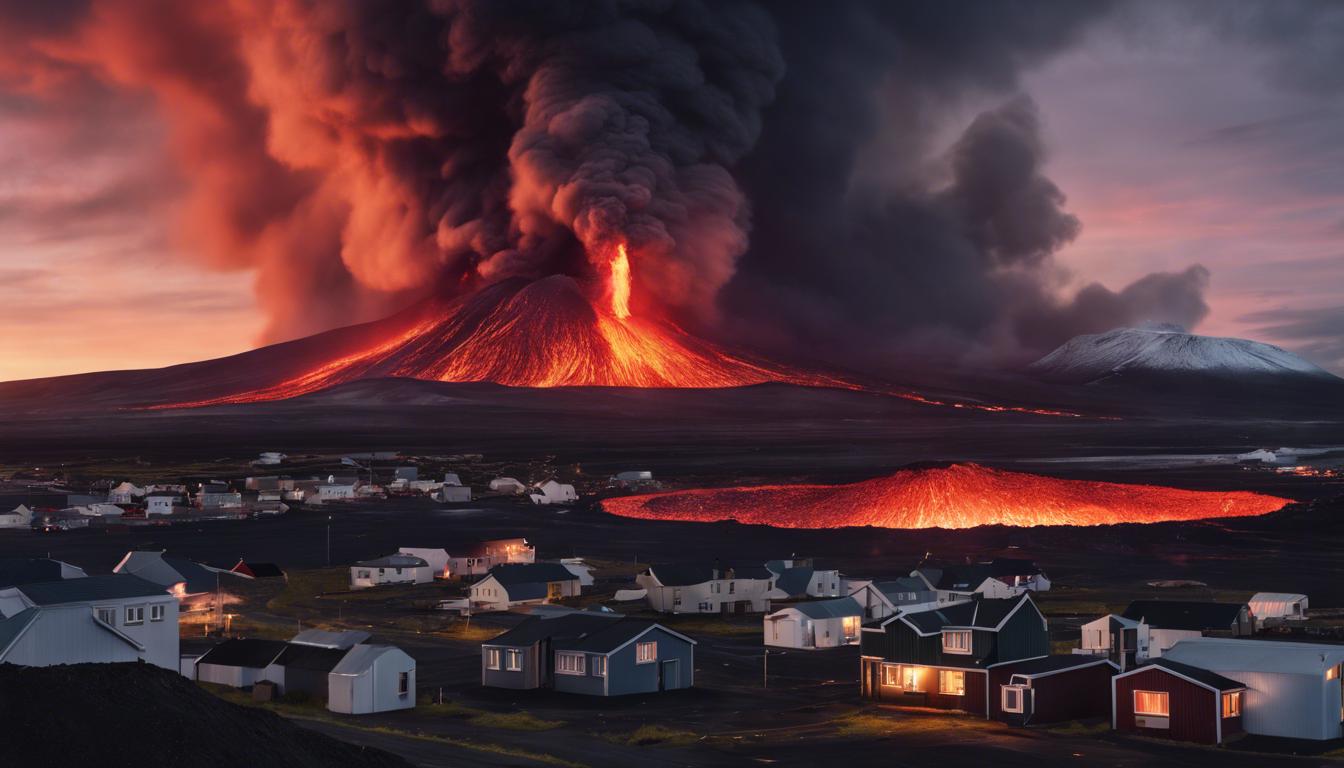Iceland is grappling with another volcanic eruption near Grindavik on the Reykjanes Peninsula, prompting evacuations and efforts to protect critical infrastructure from the advancing lava.
Iceland is currently facing its fourth volcanic eruption in three months near the town of Grindavik on the Reykjanes Peninsula, close to the capital city, Reykjavik. This recent geological activity, which commenced on Saturday, has resulted in the evacuation of residents due to the threat posed by flowing lava towards critical infrastructure, including roads and the Svartsengi power plant, a key source of electricity and water for thousands.
The Icelandic Meteorological Office has observed a decrease in the eruption’s intensity, suggesting it may soon come to an end, although a nearly 3km fissure has been produced, with lava advancing towards Grindavik at a rate of about 1km per hour. In response, emergency teams have been diligently working to fortify defensive barriers to divert the lava flow away from Grindavik and its inhabitants, along with safeguarding important facilities. The precautions taken have, so far, prevented significant disruptions, with evacuations described as efficient and swift.
The country, which is home to over 30 active volcanoes, is no stranger to volcanic activities and their consequences. Nonetheless, the recurring eruptions on the Reykjanes peninsula, including the current one, have posed ongoing challenges for Iceland, emphasizing the need for vigilance and preparedness in mitigating the impacts of such natural events. The situation remains closely monitored by local authorities and the Icelandic Meteorological Office as they strive to protect the town and its essential infrastructure from the encroaching lava.













